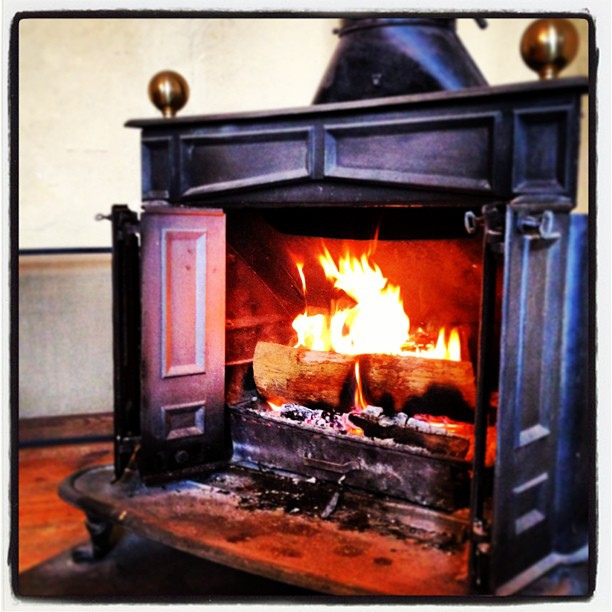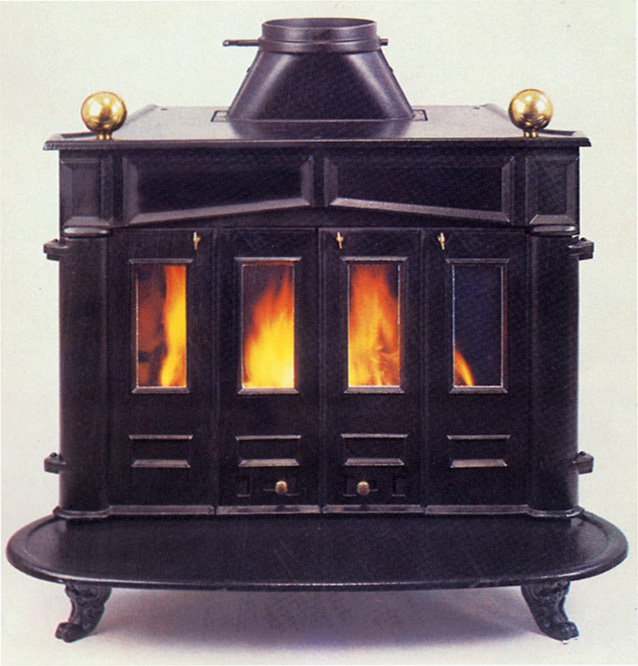
Benjamin Franklin Stove: A Key Invention in History
The Benjamin Franklin stove is an iconic invention that reflects Franklin’s ingenuity and his commitment to improving daily life in the 18th century. Often overshadowed by his more famous creations, this innovative heating device was designed during one of the coldest winters in memory, highlighting Franklin’s remarkable adaptation to climate challenges. In her insightful book, Joyce Chaplin explores how Franklin’s inventions not only transformed domestic warming but also contributed to early atmospheric science, aiding our understanding of weather phenomena like the Gulf Stream. The stove’s design embodied a blend of practicality and scientific thought, illustrating Franklin’s belief in the power of ingenuity to enhance comfort and efficiency. By analyzing Franklin’s contributions, we gain valuable insights into the intersection of innovation, historical inventions, and climate adaptation that continue to resonate in today’s world.
Known as a pioneering figure in American history, the Franklin stove stands out as a testament to Benjamin Franklin’s inventive spirit and practical solutions to everyday problems. This unusual firebox, also referred to as the Pennsylvania fireplace, emerged as a clever response to the harsh winters faced by early American settlers. Franklin’s innovative approach not only improved indoor heating but also served as a fundamental example of how technological advancements can support climate adaptation. In her recent work, Joyce Chaplin delves into the significance of this lesser-known creation, illuminating its role in the broader context of Franklin’s scientific endeavors and historical inventions. Through this lens, we appreciate not only the stove as a warming device but as a catalyst for new ideas in atmospheric science and environmental understanding.
The Innovative Legacy of the Franklin Stove
The Benjamin Franklin stove is often overshadowed by Franklin’s more famous inventions like the lightning rod and bifocals. However, this remarkable device represents a significant advancement in heating technology during a time of climatic upheaval. Developed during the harsh winter of 1740-1741, when many parts of the world were affected by the Little Ice Age, the Franklin stove demonstrated ingenuity in its design, allowing for greater warmth with less wood consumption. This invention not only redefined heating methods in colonial America but also marked a pivotal moment in the quest for climate adaptation.
Franklin’s stove was revolutionary, utilizing a unique convection system to heat rooms more efficiently. This design principle not only focused on the immediate comfort of households but also reflected Franklin’s deep engagement with atmospheric science. By understanding air flow and its thermodynamic properties, Franklin could explain natural phenomena such as the Gulf Stream, bridging the gap between everyday life and scientific exploration. The legacy of the Franklin stove endures, as it emphasizes the importance of innovative solutions to environmental challenges, a theme that resonates even in contemporary discussions on climate change.
Franklin’s Contributions to Atmospheric Science
In addition to the Franklin stove, Benjamin Franklin’s contributions to atmospheric science are notable for their foresight and application. Through his experiments and writings, Franklin was one of the first to map out the Gulf Stream, revealing the critical movements of warm ocean currents and their impact on weather patterns. This work laid the groundwork for future discoveries in meteorology, illustrating how scientific inquiry can lead to a deeper understanding of our environment and its systems. Chaplin’s book highlights this connection, illustrating how Franklin’s efforts with his stove mirrored his endeavors to grasp atmospheric dynamics.
One of Franklin’s key insights was the relationship between heat and the movement of air—a principle that would later influence the field of atmospheric science significantly. By proposing that heated air expands and rises, Franklin made pivotal contributions to our understanding of convection currents, both inside homes and outdoors. This innovative thinking set the stage for advancements in weather prediction and climate adaptation, showcasing how historical inventions remain relevant in today’s discussions about sustainable technology and environmental resilience.
Joyce Chaplin’s Exploration of Franklin’s Science and Technology
Joyce Chaplin, acclaimed historian and author, delves deep into the life of Benjamin Franklin in her latest work, ‘The Franklin Stove: An Unintended American Revolution’. Chaplin contextualizes Franklin’s inventions within the broader narrative of scientific advancements during the 18th century. By highlighting lesser-known inventions like the Franklin stove, she brings to light how Franklin’s innovative spirit contributed not only to heating homes but also to understanding the complex interplay of climate and technology. Her analysis underscores that even seemingly modest inventions can have profound implications for societal progress.
In her examination, Chaplin posits that Franklin’s work encouraged others to see technology as a means to address pressing environmental concerns. As she explores Franklin’s motivations for creating devices that improved energy efficiency, she frames his efforts in the context of 21st-century challenges, such as climate change. By considering Franklin’s innovations through this lens, Chaplin asserts that historical inventions still offer valuable lessons in technological adaptation, reminding us of the importance of marrying science with practical solutions for contemporary issues.
Historical Context of Franklin’s Innovations
Understanding the historical context in which Benjamin Franklin devised his inventions, including the Franklin stove, is crucial for appreciating their significance. The early 18th century was marked by rapid social and technological changes, with Americans grappling with the realities of climate fluctuation, such as those seen during the Little Ice Age. Franklin’s experiences during these cold winters informed his design processes, making his stove not just a tool for heating but a response to the dire adjustments required for survival within a changing environment.
Moreover, Franklin’s innovations came at a time when realities such as deforestation and resource scarcity were already impacting colonial communities. By designing a stove that utilized wood and later coal more efficiently, Franklin aimed to alleviate the burdens these issues imposed on daily life. This blend of necessity and scientific inquiry highlights Franklin’s forward-thinking approach, ensuring that his historical inventions contributed to environmental discussions long before they became mainstream.
The Legacy of Franklin’s Climate Adaptation Strategies
Franklin’s approach to climate adaptation serves as a pertinent case study for contemporary audiences. His belief that science and technology could significantly improve human comfort and climate resilience captures the essence of innovative thinking. The Franklin stove represents one of the earliest examples of harnessing scientific principles to solve everyday challenges while also responding to broader environmental factors. As modern society confronts climate change, recognizing the historical foundations laid by thinkers like Franklin becomes increasingly important.
The legacy of Franklin’s adaptations emphasizes that humans have always sought innovative solutions to environmental challenges. As Chaplin highlights, Franklin’s ability to utilize the knowledge of air movement and heat not only transformed heating systems but also reinforced the notion that thoughtful design can lead to meaningful survival strategies. Today, as we seek sustainable alternatives in the face of climate crises, learning from Franklin’s inventions and methodologies offers invaluable insights into the importance of combining science with practical action.
Franklin and the Science of Weather Prediction
Benjamin Franklin was not only an inventor and statesman but also a pioneer in the science of meteorology. His observations and experiments in air movement and temperature helped lay the groundwork for understanding weather patterns, influencing both his contemporaries and future scientists. Through his innovative work with the Franklin stove and his studies of atmospheric convection, Franklin pinpointed how warm air rises, affecting both indoor environments and outdoor weather systems.
Chaplin’s exploration of Franklin’s work reveals the interconnection between domestic science and broader atmospheric phenomena. By articulating how the principles underlying heating systems relate to weather, Franklin emboldened a generation of thinkers to consider the implications of technology on climate. His approach exemplifies a synthesis of practical invention and scientific curiosity—qualities that resonate in today’s climate discourse, as we seek to utilize advanced technology to understand and mitigate climate change.
Benjamin Franklin’s Vision for a Sustainable Future
The insights gleaned from Franklin’s inventions, especially the Franklin stove, prompt reflections on how past innovations can guide contemporary approaches to sustainability. Franklin’s methodical attempts to minimize emissions and improve the efficiency of heating systems underscore the foresight required when addressing environmental challenges. His work serves as a reminder that technological progress should strive for efficiency and mindfulness of ecological impacts, principles that are crucial in current climate discussions.
In her analysis, Chaplin encourages a reevaluation of early American inventions, emphasizing that they can inform modern sustainability strategies. Franklin’s legacy challenges us to address the anthropogenic changes shaping our climate through a combination of historical wisdom and modern ingenuity. The parallels drawn between Franklin’s strategies and today’s socio-environmental challenges highlight the need for ongoing innovation and adaptability, key themes that must permeate our response to environmental issues.
How Franklin’s Inventions Shaped American Identity
Benjamin Franklin’s inventions, including his iconic stove, played a crucial role in shaping the American identity during the 18th century. As America transitioned from a colonial outpost to an independent nation, Franklin’s contributions showcased the spirit of innovation and resilience inherent to American culture. His inventions were not merely technological advancements; they embodied the ideals of self-improvement and adaptability that characterized a burgeoning nation seeking its place in the world.
Franklin’s work emphasized the importance of scientific inquiry, encouraging future generations to view technology as a pathway to improvement. His development of the Franklin stove became a national touchstone for comfort and efficiency, reflecting broader societal aspirations. As Chaplin discusses, understanding these inventions within the narrative of American history allows us to appreciate how they connected individuals to their environments, fostering a sense of agency in mitigating challenges presented by nature.
Lessons from Franklin for Modern Inventors
Joyce Chaplin’s exploration of Franklin’s life encourages modern inventors to draw inspiration from his multifaceted approach to problem-solving. Franklin’s legacy exemplifies the value of curiosity combined with practical application, driving home the message that innovation can emerge from deeply understanding both human needs and natural principles. Today’s inventors can learn from Franklin’s dedication to addressing societal issues through thoughtful design.
Moreover, Franklin’s focus on efficiency and sustainability in his inventions presents a framework for contemporary creators facing global crises. By prioritizing eco-friendly design and minimizing environmental impact, modern inventors can honor Franklin’s legacy while pushing forward the dialogue on sustainable technologies. As Franklin himself believed, embracing science and technology as tools for betterment remains crucial in the quest for solutions to the challenges we face in the 21st century.
Frequently Asked Questions
What is the significance of the Benjamin Franklin stove in historical inventions?
The Benjamin Franklin stove is a pivotal historical invention that revolutionized home heating. Designed in the 18th century by Benjamin Franklin, this efficient fireplace utilized a flatpack of iron plates, allowing colonists to burn less wood while providing more heat than traditional fireplaces. This invention exemplifies Franklin’s innovative approach to climate adaptation during the cold winters of the Little Ice Age.
How did Benjamin Franklin’s stove contribute to the understanding of atmospheric science?
Benjamin Franklin’s stove contributed significantly to atmospheric science by utilizing the principle of convection to enhance indoor heating. Franklin explained how warm air rises and creates drafts, thereby linking the functionality of his stove to larger atmospheric phenomena, including the movement of storm systems and the Gulf Stream, making complex scientific concepts accessible to the public.
In what ways did the Franklin stove serve as a model for climate adaptation?
The Franklin stove serves as a model for climate adaptation by addressing the challenges posed by harsh winter climates. Developed during the particularly cold winter of 1740-1741, it aimed to improve indoor comfort while conserving firewood resources. Franklin’s design not only enhanced heating efficiency but also highlighted the importance of innovation in responding to environmental challenges.
How does Joyce Chaplin’s book explore the connection between Franklin’s stove and early American science?
Joyce Chaplin’s book, ‘The Franklin Stove: An Unintended American Revolution,’ delves into how Franklin’s stove catalyzed new thinking in early American science. It emphasizes the stove’s role in experimenting with heat and air to improve comfort, while also laying the groundwork for understanding environmental science and the broader implications of technological innovation during Franklin’s era.
Why is the Franklin stove often overshadowed by Franklin’s other inventions?
The Franklin stove is often overshadowed by Franklin’s more famous inventions, such as the lightning rod and bifocals, due to the popular perception of Franklin as primarily a scientific inventor. However, as environmental issues gain attention, Chaplin’s work encourages reevaluation of the stove’s significance as it relates to climate adaptation and technological advancement in historical contexts.
What insights does the Franklin stove provide for modern climate challenges?
The insights from Benjamin Franklin’s stove for modern climate challenges include the importance of efficiency and innovation in energy use. Franklin’s emphasis on minimizing emissions by re-burning smoke serves as a reminder that technological solutions should be scrutinized for their environmental impact. Today, as we face climate crises, it underscores the need for diverse and collaborative solutions rather than singular ‘quick fixes’ to tackle complex issues.
How did Franklin’s inventions affect his views on climate and environmental health?
Franklin’s inventions, including the Franklin stove, profoundly influenced his views on climate and environmental health. He recognized the adverse effects of smoke and air pollution, prompting him to design stoves that minimized emissions. This awareness illustrates Franklin’s forward-thinking approach to technology’s role in improving public health and comfort while addressing the environmental impacts of industrialization.
What role did the Franklin stove play in the economy and daily life of American colonists?
The Franklin stove played a vital role in the economy and daily life of American colonists by providing an efficient and cost-effective heating solution. By allowing users to heat their homes with less wood, it not only reduced costs associated with firewood collection but also improved the quality of life during harsh winters, making it a practical innovation for everyday comfort.
| Key Points |
|---|
| Historian Joyce Chaplin explores Benjamin Franklin’s invention of the stove, providing new insight into its impact on technology and weather understanding. |
| Franklin’s stove was designed during the harsh winter of 1740-41 to improve heating efficiency, ultimately making rooms warmer while burning less wood. |
| The stove evolved over time, with Franklin developing multiple versions that transitioned from wood to coal as a fuel source. |
| Franklin’s work on stoves was connected to a greater understanding of atmospheric phenomena, such as storm movements and the Gulf Stream. |
| The invention highlighted Franklin’s role as a forward-thinking scientist and showcased how technology could address environmental challenges. |
Summary
The Benjamin Franklin stove represents a significant yet often overlooked invention by one of America’s founding figures. Developed during one of the coldest winters, this innovative stove improved heating efficiency and contributed to our understanding of atmospheric science. Franklin’s brilliance lay not only in his creations but also in how he utilized them to address pressing environmental concerns, showcasing the potential of merging science with practical solutions. As we continue to face climate challenges today, the lessons learned from the Benjamin Franklin stove are more relevant than ever.



